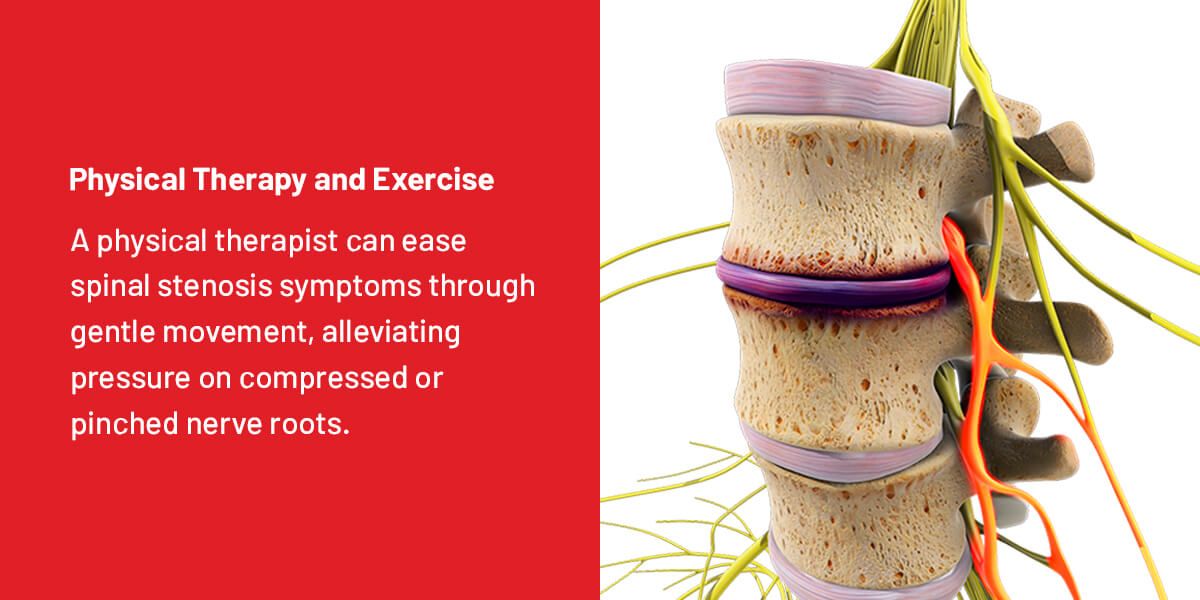
What Is Spinal Stenosis?
Spinal stenosis occurs when spaces within the spine become narrowed, putting pressure on the nerves that travel through the spinal canal. It most often affects the lower back (lumbar spine) or neck (cervical spine). Common symptoms include lower back pain, tingling or numbness in the legs, weakness, and difficulty walking, sometimes known as neurogenic claudication. Early signs can be mild and intermittent—such as minor tingling or discomfort while standing or walking. If left untreated, symptoms may worsen over time, potentially leading to significant pain or mobility challenges.[1]
Why Effective Treatment Is Important
With the aging population in the United States, early signs of spinal stenosis are being recognized more frequently. Improved imaging technology—like MRI scans—enables healthcare providers and spine specialists to diagnose spinal stenosis accurately and develop carefully targeted treatment plans. Taking action early allows you to explore therapies such as spinal decompression or minimally invasive procedures before nerve damage or severe disability develops.[2]
Benefits of Today’s Spinal Stenosis Treatments
Modern treatments for spinal stenosis offer patients several advantages. Non-surgical approaches—including supervised exercise programs, physical therapy, and medications—often help manage pain and maintain mobility. Surgical procedures, such as laminectomy and newer minimally invasive spine surgeries, now have shorter recovery times and less tissue disruption. Medicare typically covers medically necessary spinal stenosis surgery, especially for those with severe or worsening symptoms.[3] Recent innovations, including robotic-assisted spine surgery, have improved precision and may help reduce surgical risks, contributing to better quality of life for many patients.
How Treatment Works: From Diagnosis to Intervention
The treatment process usually begins with a comprehensive physical examination and MRI to determine the extent of spinal narrowing. For mild to moderate cases, non-surgical therapies—like medications, physical therapy, and epidural steroid injections—are often recommended first. Many people successfully manage symptoms with these approaches and modifications in activity.
If non-surgical methods do not provide lasting relief or symptoms progress, surgical options may be discussed. Procedures such as laminotomy or laminectomy can relieve pressure on affected nerves; the best option depends on your specific condition and goals. Consultations about minimally invasive techniques or robotic surgery can help determine if these advancements are right for you.[4] Surgery costs, such as for laminectomy, can vary, but Medicare often reduces the out-of-pocket burden.
Potential Challenges and Considerations
Selecting the right treatment involves careful planning. Certain activities or exercises may worsen spinal stenosis symptoms; a physical therapist can help you avoid movements that increase nerve pressure. Not everyone is eligible for minimally invasive surgery, and all procedures carry risks, including infection, nerve injury, or persistent pain.[5] Epidural steroid injections provide fast pain relief for some but may only be effective in the short term. Even with insurance, some out-of-pocket costs may remain. Recovery and long-term outcomes depend on your overall health and commitment to rehabilitation following surgery.[6]
Best Practices and Next Steps
For the best results, be proactive: recognize symptoms early and consult a healthcare provider experienced in spinal stenosis care. Inquire about advanced imaging and request referrals to experienced spine surgeons or specialists who accept Medicare. Explore all your options—whether long-term symptom management, modern decompression therapies, or minimally invasive procedures. Learn safe ways to stay active at home, including gentle stretching, posture adjustments, and pacing activities to reduce discomfort. Finally, discuss all potential risks and costs with your care team so you can make informed, confident choices about your spinal health.
